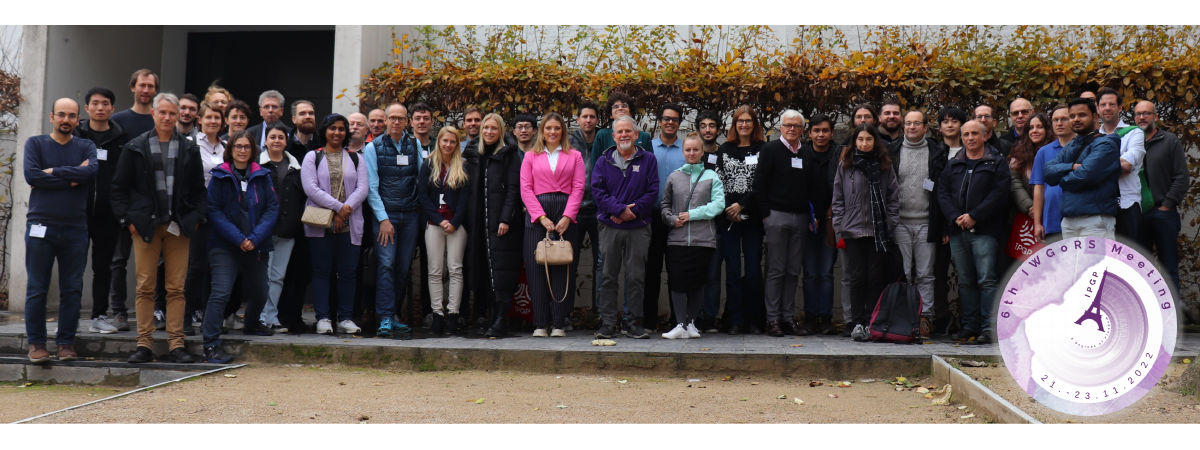1st IWGoRS Workshop
Although the effects of rotational motions due to large earthquakes have been observed for centuries, seismology and related engineering applications have been based primarily on the observation and modeling of three-component translational ground motions. However, in the past decade, rotational motions from teleseismic and local earthquakes have been recorded directly by sensitive rotational sensors, and even longer than that deduced indirectly from accelerometer arrays.
Realizing that rotational seismology (and related engineering applications) is now a new frontier to advance our understanding of earthquakes and to reduce seismic hazards, the United States Geological Survey will host the First International Workshop on Rotational Seismology and Engineering Applications in Menlo Park, California on 18-19 September, 2007. Both seismological and engineering applications will be discussed in order to develop research projects and proper deployments of instruments in free-field sites and in man-made structures.
This Workshop is one of the activities of the International Working Group on Rotational Seismology, inaugurated during the 2006 AGU Fall Meeting. At the same meeting, the working group organized a special session on Rotational Motions in Seismology, convened by H. Igel, W. H. K. Lee, and M. Todorovska. This group aims at promoting investigations of rotational motions and their implications, and sharing experience, data, software and results in an open web-based environment.
(1) Name:
The First International Workshop on Rotational Seismology and Engineering Applications
(2) Date:
18-19 September, 2007
(3) Location:
A General Session at U.S. Geological Survey, 345 Middlefield Road, Menlo Park, CA; Technical and Planning Sessions at the Vallombrosa Center, 250 Oak Grove Ave., Menlo Park, CA.
(4) Goals:
- To present three state-of-the-art lectures at the USGS Menlo Pacustom css add stylesrk main conference room (H. Igel, W. H. K. Lee, and M. D. Trifunac) for a general audience to provide broader awareness of rotational seismology.
- To present invited technical papers at the Vallombrosa Center in order to summarize our present knowledge of rotational seismology and engineering applications. These presentations will be reviews and need not include the latest results.
- To present posters (including latest results) on rotational seismology and engineering applications (open submission, but will be reviewed for acceptance by the Program Committee).
- To identify three task groups (near-field, far field, and engineering) to come up with research plans, which will then be discussed and merged into a general research plan for rotational seismology.
(5) Sponsors:
U.S. Geological Survey (USGS) and the International Working Group on Rotational Seismology (IWGoRS).
(6) Conveners:
William H. K. "Willie" Lee, U.S. Geological Survey (lee@usgs.gov)
Mehmet Çelebi, U.S. Geological Survey (celebi@usgs.gov)
Maria Todorovska, University of Southern California (mtodorov@usc.edu)
(7) Whorkshop Coordinator:
Tran Huynh, U. Southern Calif (huynht@usc.edu)
(8) Program Committee:
William H. K. Lee (lee@usgs.gov), Chair. Members: Mehmet Çelebi, Alain Cochard, Bor-Shouh Huang, Kenneth W. Hudnut, Heiner Igel, Ulli Schreiber, Maria Todorovska, and Mihailo Trifunac.
(9) Advisory Committee:
Leon Knopoff, Honorary Chair. Members: Roger Borcherdt, Yun-tai Chen, Ramanath Cowsik, Robert Page, Minoru Takeo, Roman Teisseyre, and Ta-Liang Teng.
(10) Organization Committee:
John R. Evans (jrevans@usgs.gov), Chair. Members: Gerry Brady, Michael Diggles, Sheri Farris, Susan Garcia, Marty Sanders, Stan Silverman, Christopher Stephens, and Steve Walter.
(11) Online Proceedings: visit here.
(12) The state-of-the-art lectures:
- An Introduction to the First Workshop on Rotational Seismology and Engineering Applications
(W. H. K. Lee, M. Çelebi, and M. I. Todorovska) -
Observations of Rotational Ground Motions from Local Earthquakes in Taiwan
(W. H. K. Lee, B. S. Huang, C. C. Liu, T. L. Teng, and C. F. Wu) -
Observations of Rotational Ground Motions using Ring Laser Gyros
(H. Igel, A. Cochard, A. Flaws, W. Suryanto, B. Schuberth, U. Schreiber, D. N. Pham, and , A. Velikoseltsev)
.png)